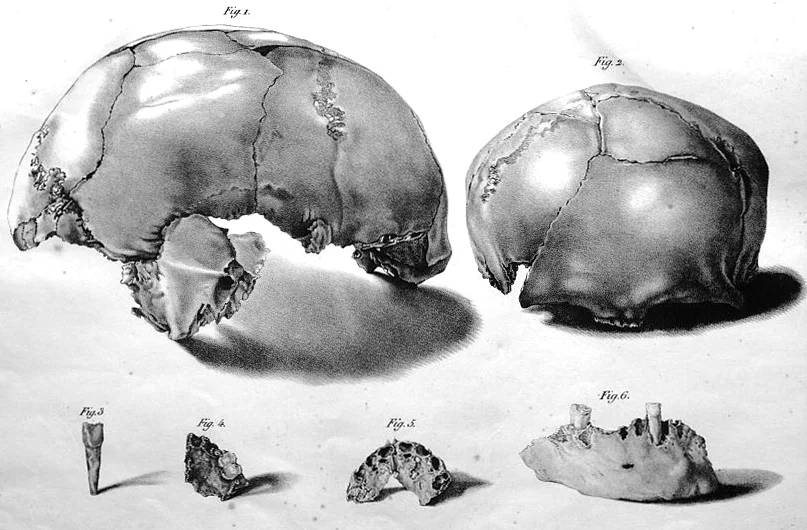Ancient Medical Procedures Still Baffle Scientists
In the modern age, when we think of surgery, we think of doctors working in sterile environments using finely crafted tools on an anestitised patient. That was not always the case. The history of early surgical techniques including stitching up lacerations, amputating limbs, and draining and cauterizing open wounds found their origin in deep antiquity. These medical interventions, however, were not our first venture into the world of medicine. The oldest medical procedure, which we have recorded evidence for, is a form of brain surgery called trepanation.
Trepanation is a surgical intervention used to treat health problems related to intracranial diseases. It involves removing part of the bony structure that surrounds the brain, the cranium. The word trepanation comes from the Greek word “trypanon” which means “a bore”. The practice of trepanation involves drilling or scraping a hole into the skull to expose the thick membrane that surrounds the brain called the dura mater. The dura mater is a layer of tissue that separated the skull and the brain. Its function is to protect the brain from mechanical injury.
Contemporary View Of Trepenation
In today’s popular culture comes a belief that the practice of is isolated to areas of Peru, the home of some of the most remarkable examples of cranial deformation found in the world. We are astounded by the surgical prowess of our Peruvian ancestors, yet around the world, thousands of skulls have been discovered that show clear signs of trepanation. This ancient practice was employed all over Europe and Russia, in Africa, Polynesia, China and in South America during some point in their history. In some indigenous cultures, it is still performed today.
Early Studies Into Trepenation

The study of the origin of trepanation finds its roots in France. The year was 1685 when French Benedictine monk Bernard de Montfaucheon discovered a skull with a hole drilled into it. His discovery was initially overlooked by the scientific community of the day until a second skull was unearthed by Alexander Francois Barbie du Bovage at Nogentles-Les-Vierges in 1816. Examination of this skull revealed that the hole in the skull was not the result of a head trauma due to an accident, injury or battle wound. Instead, it was intentionally preformed on this individual. What amazed researchers, who started investigating instances of trepanation beginning in the mid-1800’s, was that this procedure was performed on living people and in most cases they survived the surgery.
Exploration into ancient sites around France revealed hundreds of skulls with the tell-tale signs of trepanation. Skulls discovered in the Cavern de l’Homme-Mort, the sepulchral grottoes of Baye and in the dolmen of Lozère all date back to the Neolithic era some 4-5000 years ago. At one burial site in France, 120 prehistoric skulls were found, 40 of which had trepanation performed.
Scientific Findings Of Neolithic Trepanated Skulls
The holes bored into some of the earliest trepanned skulls were made by scraping away the cranial bone using a sharp stone such as a flake of obsidian or flint. The holes in these skulls vary in size from a few centimeters in diameter to encompassing nearly half of the skull.
Of the skulls examined, more than 80 % of all individuals who received trepanation during the Neolithic lived months if not years after the procedure. This is evidenced by the amount of healing that occurs around the trepanation site. If no sign of healing is observed, it is conjectured that the individual died during or immediately after the surgery. Yet many skulls investigated showed calcium deposits around the surgical site. This is an indicator of new bone growth and a clear sign of healing. In some instances, calcification completely sealed the trepanned hole.
Until recently, a burial discovered in France at Ensisheim was identified as the earliest example of trepanation. An even older one in the Ukraine a short time ago superseded it. The Ensisheim location dates to 5100-4900 BCE. The interred man did not “go under the knife” once, but twice. The skeletal material that was removed from the man’s cranium measure 2.6 by 2.4 inches toward the front of his head. The other surgical site revealed an enormous amount of bone matter missing with a massive 3.7 by 3.6 inches section of skull being removed. Evidence also indicates that the man survived both surgeries because bone healing is evident in each of the locations.
Trepanated Skulls Leave Us With More Questions Than Answers
Like many things that come to us from deep antiquity, the more we dig in, the more questions we are left with. There is a great deal of speculation about why ancient civilizations started to implement this delicate surgical procedure in the first place. Cultures in the modern era, including ingenious ones whose medicine men still perform trepanation, indicate that it is performed to relieve intracranial pressure, headaches, epilepsy and mental disorders. Some claim that it was used for ritualistic purposes, to excise the evil spirits that cause illness or to enhance spiritual experiences.
Historical evidence, based upon the location and demographics of skulls studied around the world suggest that this practice was used to relieve head injuries caused by weapons including clubs and slings. There is a statistically significant difference in the number of adult males have succumb to this procedure than woman and children. These number support the belief that individuals were trepanned due to warfare injuries since only males would have engaged in these acts.
Trepenation & Modern Medicine
The rise of modern medicine in the 19th century saw rapid advances in science including the introduction of anesthesia as well as physicians practicing in an aseptic (germ free) surgical environment. Based upon 18th and 19th century pre-antiseptic surgical standards individuals who received trepanation as a life-giving measure suffered an almost 100% mortality rate. Infections along the surgical site, due to unsanitary conditions, would often lead to sepsis. Additionally, antibiotics and other infection fighting drugs were not yet part of a physician’s arsenal. This left researchers and physicians of the day doubting the efficacy of this ancient procedure.
Where did these early doctors learn the skills required to cut into the human brain? How did they, using a sharpened stone, learn to scrape away just enough bone matter to expose the brain without damaging the underlying blood-vessels, meninges (dura mater) and brain. We do not find any evidence supporting a long history of practice, trial and error. The tides turned when they realized that in indigenous cultures, who still utilize ancient methods, the survival rate was incredibly high. How these ancient healers learned to do it in the first place is still a mystery.
Advanced Knowledge In Neolithic Times
The amazing success of our Neolithic ancestors testifies to their advanced level of knowledge. Even in today’s modern surgical environment, medical doctors shy away from this delicate procedure and only turn to it as a last resort to relieve pressure from a patient’s skull or to drain hemorrhages.
We still marvel at the skills of our ancestors. Their outstanding success rate is a testament to their technical abilities. In their first venture into the realm of medicine, they were able to successfully complete a difficult procedure that modern medicine shies away from. What makes this even more incredible is that all of this was done in a non-sterile environment, without anesthesia and without access to antibiotics. The evidence provided by the hundreds of prehistoric skulls found in France, as well as around the world, demonstrates the extraordinary achievement of these ancient surgeons – their patients lived to talk about it.
© Copyright Rita Louise, Inc. – soulhealer.com. All rights reserved.
Learn more about this and other weird body modifications that ancient people around the world practiced in my book Stepping Out Of Eden. Order your copy Today!




